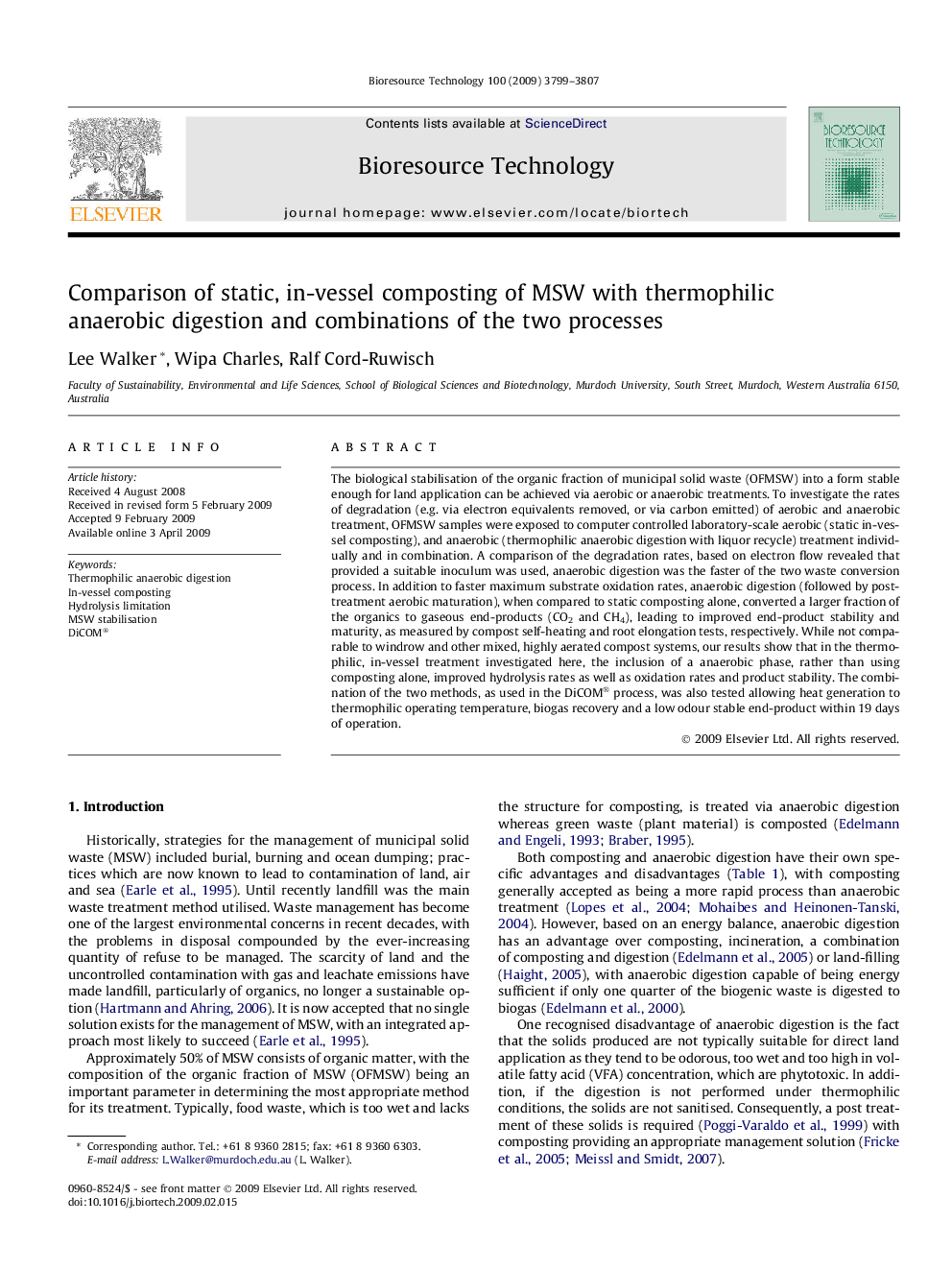| Article ID | Journal | Published Year | Pages | File Type |
|---|---|---|---|---|
| 684830 | Bioresource Technology | 2009 | 9 Pages |
The biological stabilisation of the organic fraction of municipal solid waste (OFMSW) into a form stable enough for land application can be achieved via aerobic or anaerobic treatments. To investigate the rates of degradation (e.g. via electron equivalents removed, or via carbon emitted) of aerobic and anaerobic treatment, OFMSW samples were exposed to computer controlled laboratory-scale aerobic (static in-vessel composting), and anaerobic (thermophilic anaerobic digestion with liquor recycle) treatment individually and in combination. A comparison of the degradation rates, based on electron flow revealed that provided a suitable inoculum was used, anaerobic digestion was the faster of the two waste conversion process. In addition to faster maximum substrate oxidation rates, anaerobic digestion (followed by post-treatment aerobic maturation), when compared to static composting alone, converted a larger fraction of the organics to gaseous end-products (CO2 and CH4), leading to improved end-product stability and maturity, as measured by compost self-heating and root elongation tests, respectively. While not comparable to windrow and other mixed, highly aerated compost systems, our results show that in the thermophilic, in-vessel treatment investigated here, the inclusion of a anaerobic phase, rather than using composting alone, improved hydrolysis rates as well as oxidation rates and product stability. The combination of the two methods, as used in the DiCOM® process, was also tested allowing heat generation to thermophilic operating temperature, biogas recovery and a low odour stable end-product within 19 days of operation.
